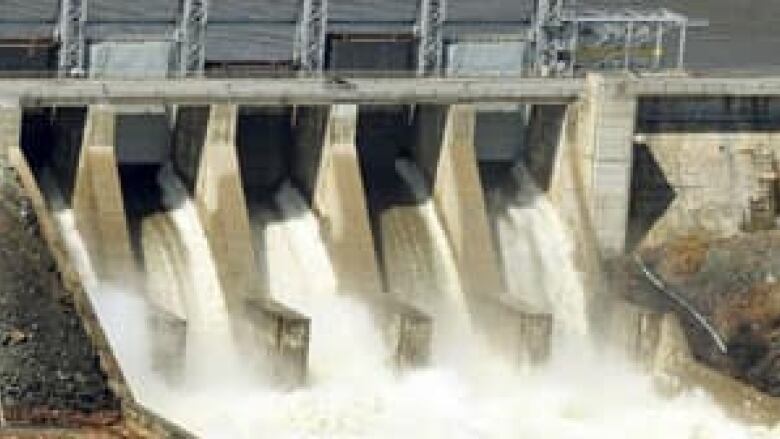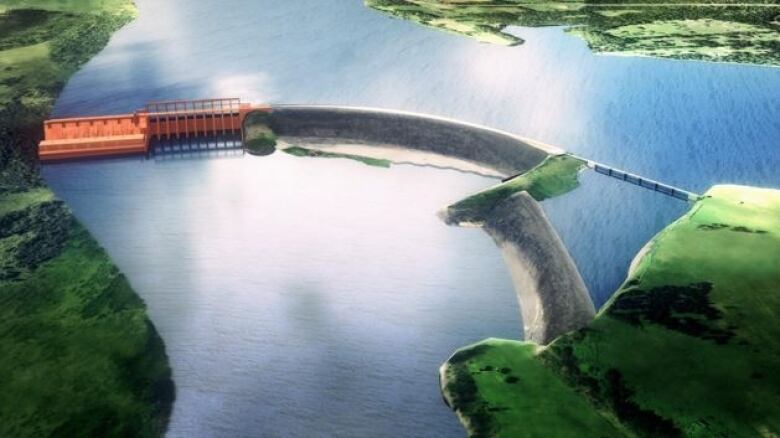Mactaquac dam life extension through full rebuild on site ruled out
NB Power still exploring other possible ways to make existing dam last beyond 2030

A full section-by-sectionrebuild of the MactaquacGeneratingStation in its current location is not a feasible option to extend the life of the dam beyond 2030, NB Power states in its latest update on the multi-billion Mactaquac project.
The Crown corporation must decide by the end of this year whether it wishes to build a newdam, complete with power generation, maintain the dam to keep the headpond but give up power generation at the site, or remove the dam and allow the river to return to its natural state.
- NB Power extends deadline for public input on Mactaquac future
- NB Power's Mactaquac project creates many social impacts
- Mactaquac dam replacement cost could hit $5B, says NB Power
- NB Power eyes cheaper refurbishment plan for Mactaquac dam
NB Power has also been exploring options to extend the life of the current dam beyond 2030, when it is projected to reach the end of its life due to a chemical reaction known as alkali aggregate reaction in its concrete. The chemical reaction has been taking place since the 1980s and causes the concrete in the spillway and powerhouse to swell.

"The full in situ rebuild, a section-by-section replacement of all concrete in its current location, was considered and was not found to be feasible," stated NB Power.
However, a partial rebuild of the current structure was determined to be worthy of evaluation.
"Under this approach, only some of the concrete around key mechanical components would be replaced," states the report. "The remainder would be left in place.

Another team is exploring possible ways to extend the dam's life beyond 2030 by putting more emphasis on the necessary interventions with mechanical equipment rather than with the dam's structure itself.
"As these two approaches evolve, it is possible that the two will converge into one as NB Power further assesses their potential benefits or drawbacks."
NB Power says if extending the life of the existing dam through such methods is found to be both technically and economically feasible, it will then compare that course of action to the three options that have been under study.
3 options
The three options that were initially put forward carry a cost of between $2 billion and $5 billion. Those options are:

Renewable energy
The Mactaquacstation's generation capacity is 668 megawatts and NB Power notes in the report that any reduction in energy produced by Mactaquac must be replaced by other renewable energy, such assolar, wind, hydroelectric, ocean-power, biomass, biogasand sanitary landfill gas.
The provincial government requires NB Powerto develop renewable energy resources to meet 40 per cent of in-province electricity sales by 2020.
"On average, Mactaquac produces approximately 1.6 terawatt-hours of energy per year, which would need to be replaced by equivalent, eligible renewable energy if the station is not rebuilt," states the report.












_(720p).jpg)


 OFFICIAL HD MUSIC VIDEO.jpg)
.jpg)



























































































